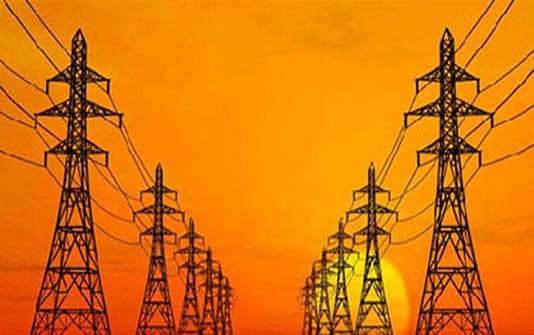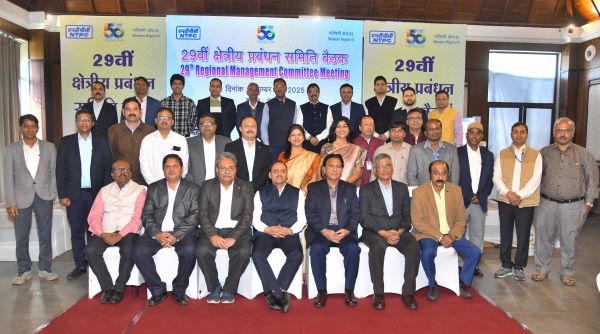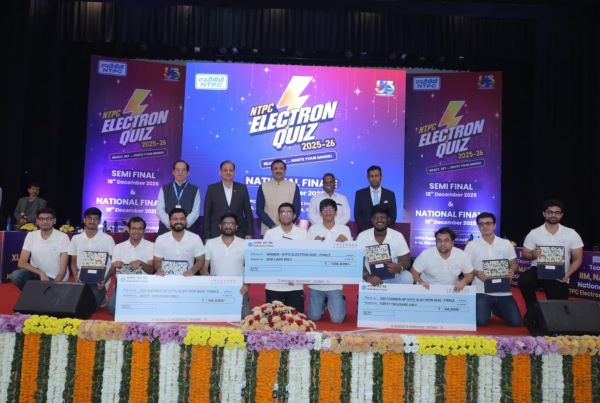
Team News Riveting
New Delhi, August 18
The Distribution Sector in India is termed as the most important but also the weakest link in the Power Sector value chain. However, the Sector is also witnessing tell-tale signs of improvement in performance and increase in efficiencies due to a multitude of initiatives made by the Central & State Governments and the DISCOMs themselves.
As per the Audited Annual Accounts of Power Distribution Utilities, DISCOMs have shown an improvement in their operational and financial performance over the past few years. While the Aggregate Technical and Commercial (AT&C) losses have come down from 23.5 per cent in FY 2016-17 to 21.83 per cent in FY 2019-20, the gap between average cost of supply (ACS) and average revenue realised (ARR) narrowed down to Rs 0.28/kWh in 2019-20 from Rs 0.33/kWh in 2016-17. The annual Profit After Tax (PAT) figures being negative have also shown improvement from Rs 33,894 crore in FY 2016-17 to Rs 32,898 crore in FY 2019-20.
Recently, some media reports have published speculations regarding DISCOMs achieving loss levels of Rs 90,000 crore in FY2021. These speculations trace their origins to a report published by ICRA on the Power Distribution Sector in March, 2021. While this report indicates Profit After Tax (PAT) figures of negative ~Rs 50,000 crore in FY19 (which is consistent with the PFC’s Annual Utilities report of FY 2019), the projections of PAT figures of FY 2020 are shown to increase to the tune of negative ~Rs 60,000 crores. This report further builds on these losses and projects total DISCOM losses of ~Rs 90,000 crore in FY2021. One of the reasons ascribed to this speculation is the decline in electricity volume sales in the year 2020-21 due to the COVID induced lockdown.
This report also mentions ~Rs 30,000 crore increase in DISCOM dues to its creditors from March, 2020 to December, 2020, and perhaps assumes this increase in payables, which is essentially a cash flow problem, to directly reflect into additional DISCOM losses in FY 2021 over the projections of FY2020.
The facts are quite to the contrary. It is discernible that the actual PAT figure for FY2020 is almost half of the negative ~Rs 60,000 crores projected by ICRA for FY2020, thereby indicating that the ICRA estimations of even FY2020 are significantly flawed. ICRA has further built up the losses for FY 2021 on their erroneously estimated figures of FY 2020 by adding another Rs 30,000 crores due to COVID for reasons mentioned above. No details have been given in the report to cover this increase.
As a result of the above erroneous projections by ICRA, the loss figures of Rs 90,000 crore for FY2021 seem to be grossly inflated. The media reports, relying on this misleading projected figures of DISCOM losses, do not take into cognizance the fact that under the current Regulatory system of Electricity Tariff determination, a mechanism of True-up’s already exists that would allow the recoveries of losses arising due to change in consumer category-wise consumption patterns coming with COVID induced lockdowns, to be covered through tariffs in the subsequent year. ICRA has also alluded to this aspect in their report, however, this nuanced position has not been reflected in the media reports.
The adverse performance of DISCOMs across the country already seem to have gone past the inflexion point, and are showing green shoots of turnaround. The measures already taken by the Government would further incentivise the DISCOMs to reform, perform, and transform in an efficient and cost effective manner.
The Government of India has been taking significant steps to improve the operational efficiencies and financial viability of DISCOMs. To tide over the liquidity problems of increasing DISCOM payables to Gencos arising out of the outbreak of COVID-19 lockdowns, the Government of India has launched a Liquidity Infusion scheme under which DISCOMs are already availing benefits under the scheme tied to reforms. The Government has also incentivised the DISCOMs to transform, reform and perform by linking 0.5 per cent of the Additional borrowings linked to power sector reforms from FY 2022 to FY 2024. Apart from the above, the Government of India has also launched the Revamped Reforms-Based Results-Linked Scheme, which allows the States to create infrastructure tied to initiation of Reforms and achievement of Results for improving their financial sustainability and operational efficiencies. This scheme would be in operation till FY 2025-26, and includes a major component of prepaid Smart metering to consumers, out of which almost 10 crore Smart meters have been prioritised for installation in all UTs; all electricity Divisions of 500 AMRUT cities with AT&C losses more than 15 per cent; all Industrial and commercial establishments; all Government Offices at Block level and above; other high loss Urban and Rural areas by December, 2023.



